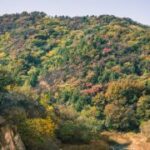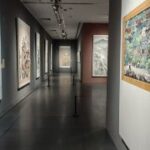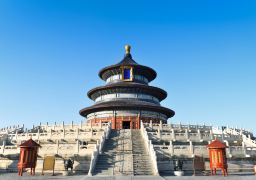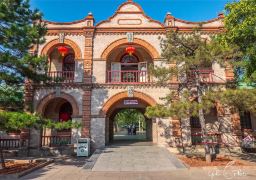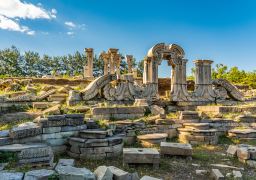The Calligraphy and Painting Gallery of the Palace Museum is located on the southwest side of the Palace Museum in Beijing. Entering the Palace Museum from the Meridian Gate and passing through the Gate of Harmony and Peace, you will arrive at the Wu Ying Dian. This is the Calligraphy and Painting Gallery. The gallery houses a rich collection of ancient Chinese calligraphy and paintings, including rare ancient copies from the Jin, Tang, Song and Yuan dynasties, as well as representative works of famous painters from various painting schools in the Ming and Qing dynasties.
The Wu Ying Dian was originally one of the main office spaces in the outer palace. After the major renovation of the Palace Museum in 2005, it was turned into a Calligraphy and Painting Gallery. Its east and west side halls are the Classics Gallery. The Wu Ying Dian and the adjacent Jing Si Dian continuously exhibit the calligraphy and paintings in the collection of the Palace Museum. Due to limited space, the calligraphy and paintings in the collection can only be exhibited in rotation, and the exhibits are changed every few months. Here are many famous paintings and calligraphy copies, such as Wang Xizhi’s ‘Preface to the Orchid Pavilion’, Huang Tingjian’s ‘Poem for My Forty-Ninth Nephew’, Li Tang’s ‘Picking Ferns’, Zhao Mengfu’s ‘Rock and Sparsely Wooded Landscape’, Wen Zhengming’s ‘Inscription on a Humble Abode’, Tang Yin’s ‘Scenery of Qiantang’, Zhu Yunming’s ‘Man Jiang Hong Ci’, etc. Of course, since it is an exhibition in rotation, what you see each time will be different. Whatever is on display is what you get. You may not be able to see what you want to see, but it is definitely worth seeing. Opening hours: The specific business status is subject to the opening situation on the day. Must-see tips: Taking photos of ancient paintings in the gallery is prohibited.Wu Ying Dian
The Calligraphy and Painting Gallery of the Palace Museum is located on the southwest side of the Pa[...]


